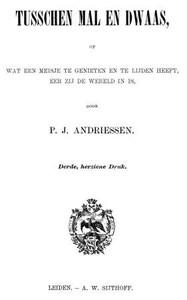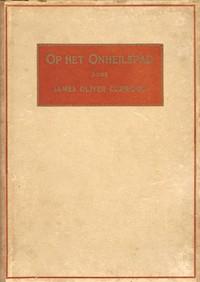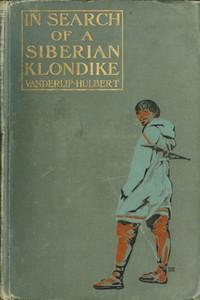Read this ebook for free! No credit card needed, absolutely nothing to pay.
Words: 18249 in 4 pages
This is an ebook sharing website. You can read the uploaded ebooks for free here. No credit cards needed, nothing to pay. If you want to own a digital copy of the ebook, or want to read offline with your favorite ebook-reader, then you can choose to buy and download the ebook.


: Tusschen mal en dwaas Wat een meisje te genieten en te lijden heeft eer zij de wereld in is by Andriessen P J Pieter Jacob Helm Clementine - Teenage girls Juvenile fiction; Aunts Juvenile fiction
CHAP. PAGE
THE ANCIENT SCANDINAVIAN RELIGION
THE GREAT GODS: THOR AND ODIN
The three gods and the goddess whose names are thus commemorated in the days of the week hold also a prominent place among the Scandinavian deities, where they appear under the names of Ty , Odin , Thor , and Frigg. But while Odin and Thor actually hold the place which they might be expected to occupy as objects of worship, the warlike deity Ty has apparently become of secondary importance. This is indicated not only by the native Scandinavian evidence, but also by what can be gleaned from external sources. In an Old English sermon by the Abbot AElfric, about the year 1000, the mention of some of the Roman deities leads the preacher to introduce the corresponding Danish names. Jove or Jupiter, he says, 'was called Thor among some peoples, and him the Danes love most of all.' Mercury, too, 'was honoured among all the heathens, and he is otherwise called Othon in Danish.' Of Ty there is no mention, although Mars is one of the Roman deities specified by name. In another homily by AElfric there is the same identification of Thor and Odin, along with 'the foul goddess Venus, whom men call Frigg,' but here also Ty is ignored.
More than merely negative evidence, however, is supplied by another outside source, which is the leading contemporary account of Scandinavian religion, viz. that given by the German historian, Adam of Bremen , in his description of the great temple of the Swedes at Upsala, and of the gods worshipped there. Here he writes, 'the people venerate the statues of three gods, so placed that the most powerful of them, Thor, has his seat in the middle of the bench. On either side of him Wodan and Fricco have their places. Of these the significations are as follows. Thor, they say, presides in the air, and governs thunder and lightning, winds and rains, fair weather and crops. The next, Wodan, that is "Fury," carries on wars and gives men valour against their enemies. The third is Fricco, bestowing peace and pleasure upon mortals.' The image of Wodan, he adds, resembled that of the Roman Mars; that of Thor suggested Jupiter, while Fricco was represented in a form resembling the minor deity Priapus.
The god here called Fricco was known to the Scandinavians themselves by the name of Frey , and that the triad thus specified by Adam were in fact the chief deities worshipped in the later stages of Scandinavian religion is abundantly proved by the native evidence. The identification of Odin with Mars in place of Mercury is also in full accordance with the later beliefs: in other words, Odin has taken the place of Ty as the chief war-god. Whether this was the main reason for the admission of Frey as third member of the supreme triad is uncertain, the earlier position of this god being altogether unknown. Thor, it will be noticed, still retains his place as the counterpart of the Roman Jupiter, and stands between the other two gods, as being the most powerful. The precise relationship, however, between Thor and Odin is not by any means so simple as this statement would suggest, and forms indeed one of the most difficult questions connected with the subject. This will be most clearly brought out by a detailed account of the relative place assigned to each of them in religious practice on the one hand, and in mythological accounts on the other; and the most correct impression of the facts will probably be obtained by dealing first with Thor.
For Norway and Iceland there is a considerable amount of more direct evidence than this. In several of the Icelandic historical writings it is expressly stated that some of the leading colonists had a special regard for Thor and his worship. Of one who came from the island of Mostr, on the south-western coast of Norway, it is told that he had the custody of Thor's temple there, and was a 'great friend' of the god, on which account he was called Thorolf . This Thorolf fell out with King Harald, and went to inquire of Thor, 'his loving friend,' whether he should make terms with the king or leave the country. The oracle directed him to go to Iceland. He pulled down the temple, and took with him most of the timber, as well as the earth from under the pedestal on which Thor had been seated. On coming near Iceland, he threw overboard the two chief pillars of the temple, on one of which the image of Thor was carved, and declared he would settle wherever Thor made these come ashore. After landing on the south side of Broadfirth, they found that Thor had come ashore with the pillars on a headland, to which they then gave the name of Thor's-ness, while a river in the neighbourhood was also named after the god. When this Thorolf had a son in his old age, he gave him to his friend Thor, and called him Thorstein. Thorstein also gave his own son to Thor, 'and said he should be a temple-priest, and called him Thorgrim.' Another son of Thorolf's sacrificed to Thor, that he might send him pillars for his house, 'and gave his son for this,' which probably means that he also dedicated his son to the god, though one account appears to imply that he actually offered him in sacrifice.
Of another settler, Helgi the Lean, who was brought up in Ireland, it is stated that when he came in sight of Iceland, he inquired of Thor where he should land; the oracle directed him to Eyafirth, and would allow him to go nowhere else. Before they came in sight of the firth, Helgi's son asked him whether he would have obeyed Thor's directions if he had sent him to winter in the Arctic Ocean. Yet Helgi was not absolutely devoted to Thor, as he also believed in Christ, and even called his Icelandic homestead by the name of Christness. It was to Thor, however, that he turned for aid in sea-faring and difficult enterprises, and in all matters that he considered to be of most importance.
Thorolf and Helgi were not the only settlers who allowed Thor to fix the place of their habitation in Iceland, and one in the south of the island also consecrated all his land to Thor and called it Thor's-mark. The tendency to appeal to Thor for help in time of need is further illustrated by an incident recorded as having taken place during the Wineland expedition of 1007-8. The explorers were in great straits for want of food, and had prayed for help, which seemed long in coming. One of the party, named Thorhall, was found by the others on the peak of a cliff, looking up to the sky, and muttering something, besides making strange gestures of which he would give no explanation. Shortly afterwards a whale came ashore, and Thorhall said, 'The red-bearded one was stronger now than your Christ. I have got this for my poetry that I made about Thor. He has seldom failed me.'
The firm hold which Thor had upon the minds of his worshippers is also illustrated by the way in which some of the converts to Christianity felt uneasy at abandoning him. Thorgils of Fl?i, in the south-west of Iceland, was one of the first to accept the new faith, and more than once he dreamed that Thor came to him with reproaches and threats for this desertion. Thorgils was firm, and defied the angry god, but his later perils at sea were believed by his companions to be the work of Thor, and some of them even wished to sacrifice to him for a fair wind, saying that people had fared much better when they made offerings to him.
The prominent place held by the worship of Thor in the old religion is also indicated by the frequent mention of images of the god in various temples ; this fact acquires special significance when contrasted with the lack of similar statements regarding Odin. It is also extremely probable that it was Thor, and not Odin, to whom the vague names of 'Land-god' and 'The Almighty God' were given; the latter was used, coupled with the names of Frey and Nj?rd, in an old oath-formula.
The form in which the hammer was commonly represented easily led to its association with the Christian mark of the cross. At a festival held in Norway in 952, Earl Sigurd dedicated the first toast to Odin, and after drinking from the horn handed it to King H?kon, who was a Christian. When the king took it, he made the mark of the cross over it. The heathens present protested against this, and Earl Sigurd attempted to satisfy them by saying, 'The king does like all those who trust to their own might and strength, and consecrate their toast to Thor. He made the mark of the hammer over it before he drank.'
Free books android app tbrJar TBR JAR Read Free books online gutenberg
More posts by @FreeBooks

: Op het onheilspad by Curwood James Oliver Kroon A M Translator - Hudson Bay Railway Fiction; Northwest Territories Fiction


: In Search of a Siberian Klondike by Hulbert Homer B Homer Bezaleel Vanderlip Washington Baker - Siberia (Russia) Description and travel; Gold mines and mining Russia (Federation) Siberia






